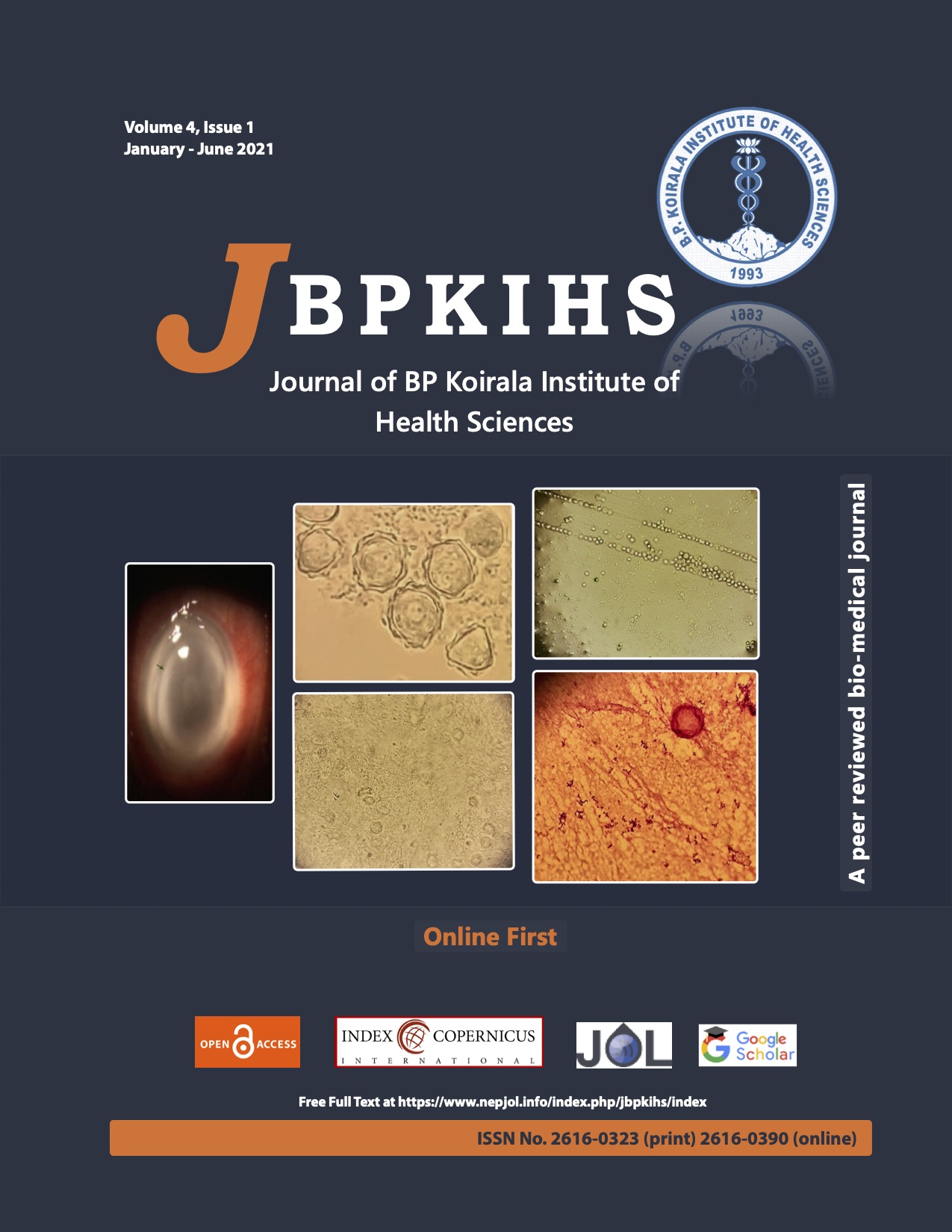Outcome of Neonatal Hyperbilirubinemia from a Tertiary Care Hospital in Eastern Nepal: A Cross-sectional Study
DOI:
https://doi.org/10.3126/jbpkihs.v4i1.36324Keywords:
Bilirubin, Nepal, Newborn, HyperbilirubinemiaAbstract
Background: Timely detection and treatment of pathological hyperbilirubinemia in newborns can prevent acute bilirubin encephalopathy and its consequences. We aimed to identify its occurrence, presentation time, phototherapy duration, need for exchange transfusion, and outcome.
Methods: In this cross-sectional study, we enrolled all the babies admitted for pathological neonatal hyperbilirubinemia in the university hospital of BPKIHS in a one-year duration. Babies with life-threatening congenital malformations or conjugated bilirubin > 20% of total serum bilirubin or > 2 mg/dl were excluded. Obstetric profile of mothers, clinical and laboratory parameters of babies, onset time of pathological jaundice, duration of phototherapy, need for exchange transfusion or intravenous immunoglobulin were recorded. Neonatal outcome was classified as good and poor and its association with potential predictors analyzed.
Results: One-hundred and fifty babies developed neonatal jaundice requiring treatment. The most common causes included ABO and Rh setting. No cause was found in 26 (18%) babies. One-hundred and eight babies (72%) were only managed with phototherapy whereas 42 (28%) required both phototherapy and double volume exchange therapy. The majority (84.5%) had good outcome without any residual neurological deficit at discharge. Babies with total serum bilirubin > 20 mg/dl at presentation, duration of phototherapy > 44.8 h, ABO setting, hemolysis, and out born status significantly developed poor outcome (p < 0.05).
Conclusion: About 15% of the babies with hyperbilirubinemia had acute bilirubin encephalopathy at discharge suggestive of poor outcome. Babies with high bilirubin at presentation, longer duration of phototherapy, ABO settings, hemolysis, and out born status developed poor outcome.
Downloads
Downloads
Published
How to Cite
Issue
Section
License
This license enables reusers to copy and distribute the material in any medium or format in unadapted form only, for noncommercial purposes only, and only so long as attribution is given to the creator.




